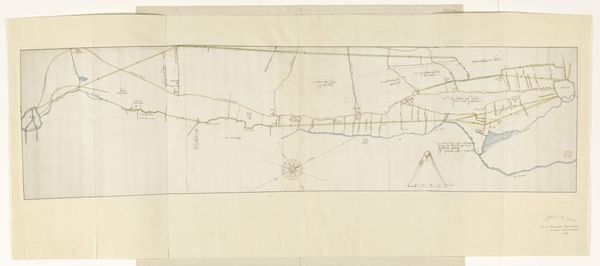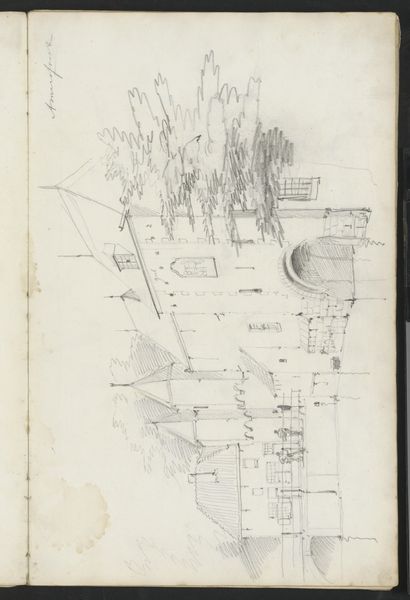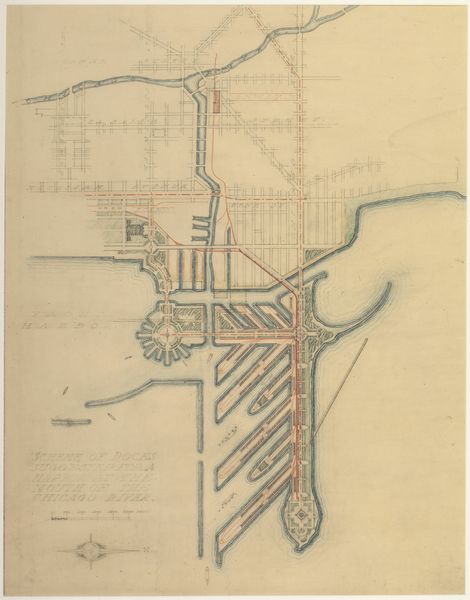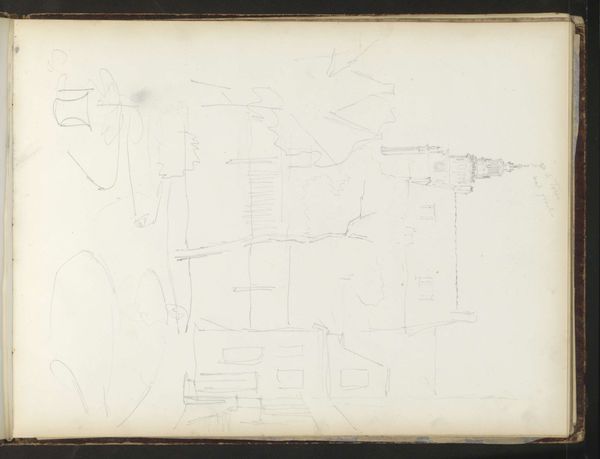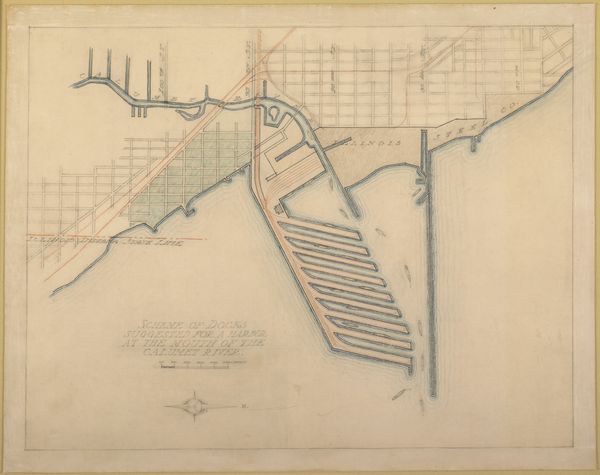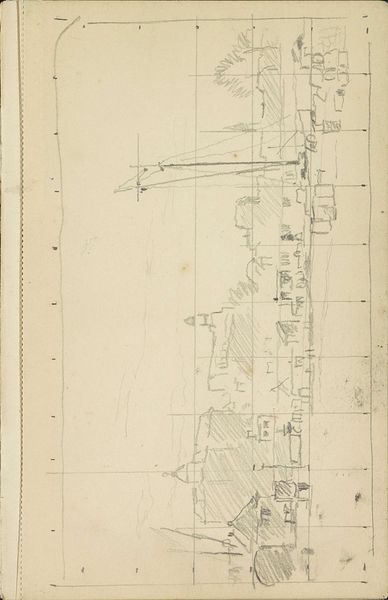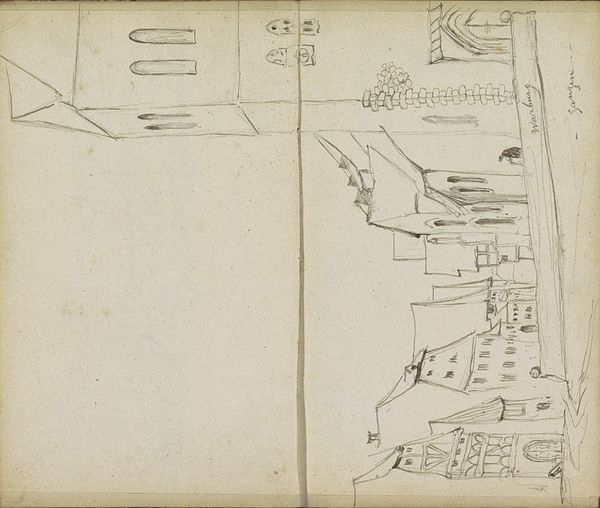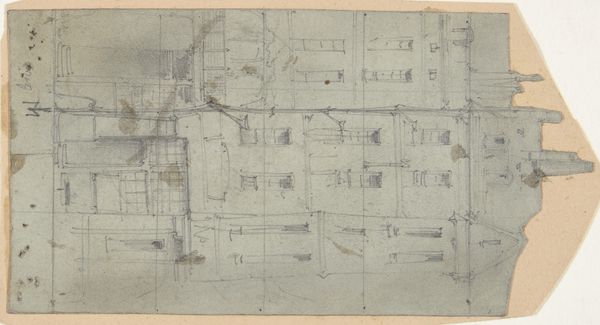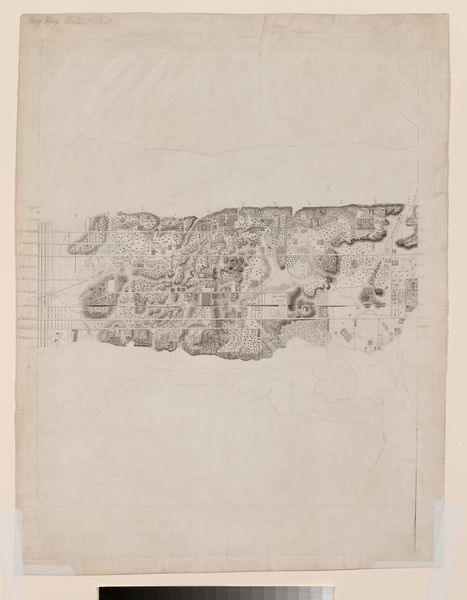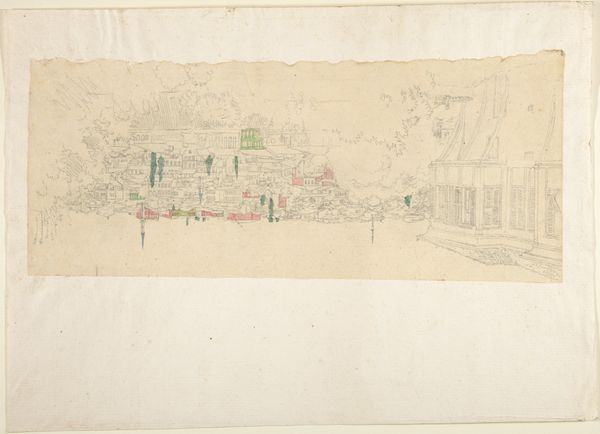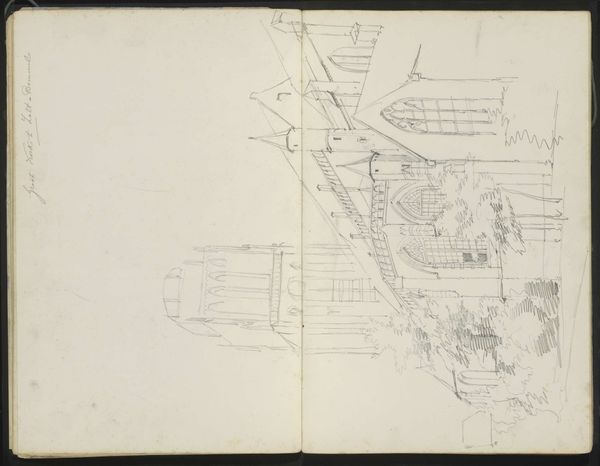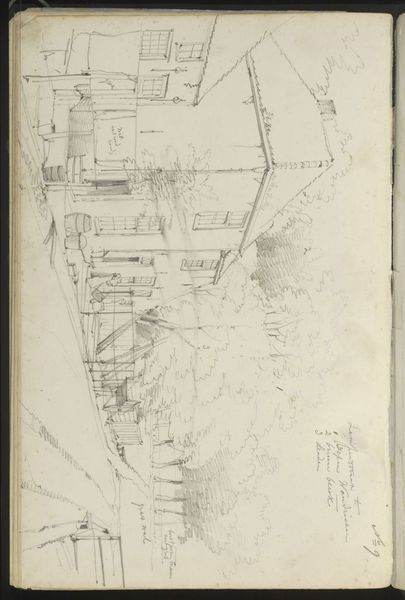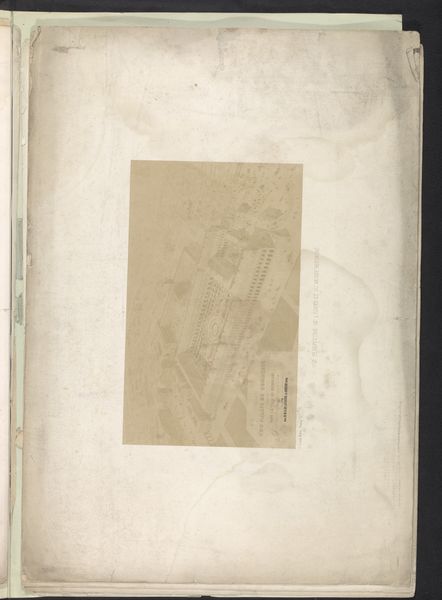
drawing, coloured-pencil
#
drawing
#
coloured-pencil
#
coloured pencil
Copyright: Public Domain
Curator: We're looking at a work titled "Design for a Stage Set" by Eugène Cicéri, created sometime between 1830 and 1890. It's a drawing rendered with colored pencils. Editor: My initial impression is that it's wonderfully skeletal. It reminds me of incomplete architectural plans, existing only as outlines with the faintest color. There is a ghostly feel that hovers around the partially finished details. Curator: I find the grid especially compelling. It dominates much of the image and presents a system that provides both structure and depth. The grid offers us a privileged glimpse into Cicéri's design method, and a complex interaction of spatial division and decorative freedom. The upper right reveals what can happen if we move past constraint into full, ornamented architectural extravagance. Editor: Considering it’s a stage set design, it’s hard not to see it as a reflection of the theatrical world’s emphasis on illusion and artifice during this period. These meticulously crafted facades mirrored a society enthralled by spectacle. You know, how power often cloaks itself in performance. The design certainly seems aware of these political realities and power structures. Curator: Indeed. Notice the unfinished quality alongside the ornate details. It sets up a visual tension. The upper register—partly realized—shows heraldic elements. Then we get the draping fabric of what could be royal boxes or balconies, rendered only as hints. I think these compositional tensions highlight that drama. Editor: The colored pencils give the drawing an ephemeral quality too. They lend themselves so readily to conveying grand narratives in places where displays of power often collided. And you're right, that visual tension, the suggestion of grandeur amidst incomplete spaces, really speaks to how theaters shaped and reinforced cultural values at the time. They provided a literal stage on which societal dreams and fears played out. Curator: Looking at this, I am fascinated with the potential of the bare minimum to represent maximal spectacle, whereas I was once focused on his skillful articulation of depth and ornamentation within confined boundaries. Editor: Absolutely. The piece serves as an interesting bridge between intention and cultural interpretation, providing just enough imagery for an imagined reality.
Comments
No comments
Be the first to comment and join the conversation on the ultimate creative platform.
